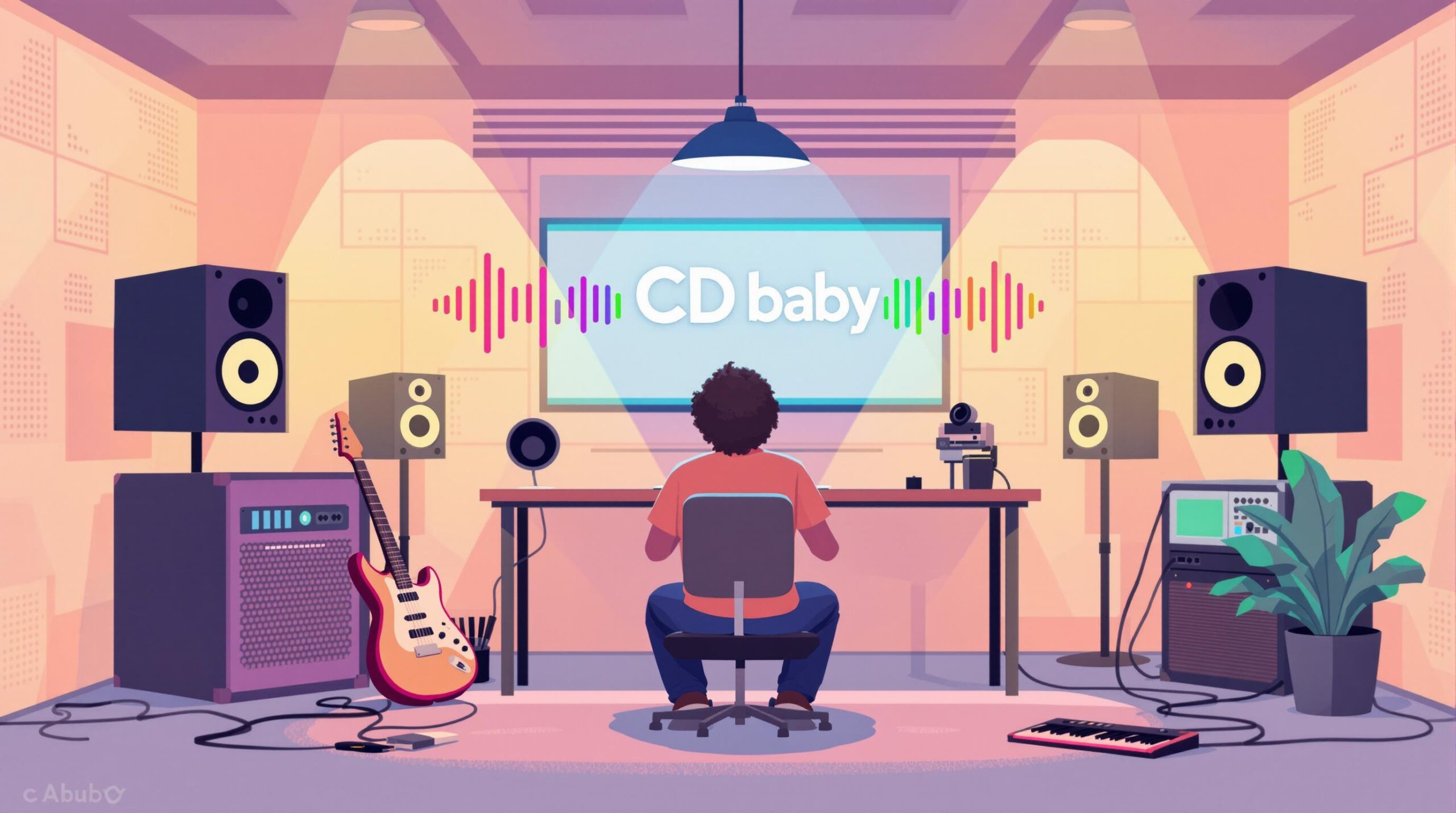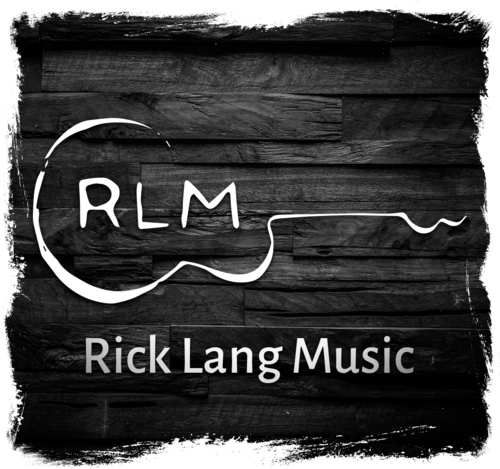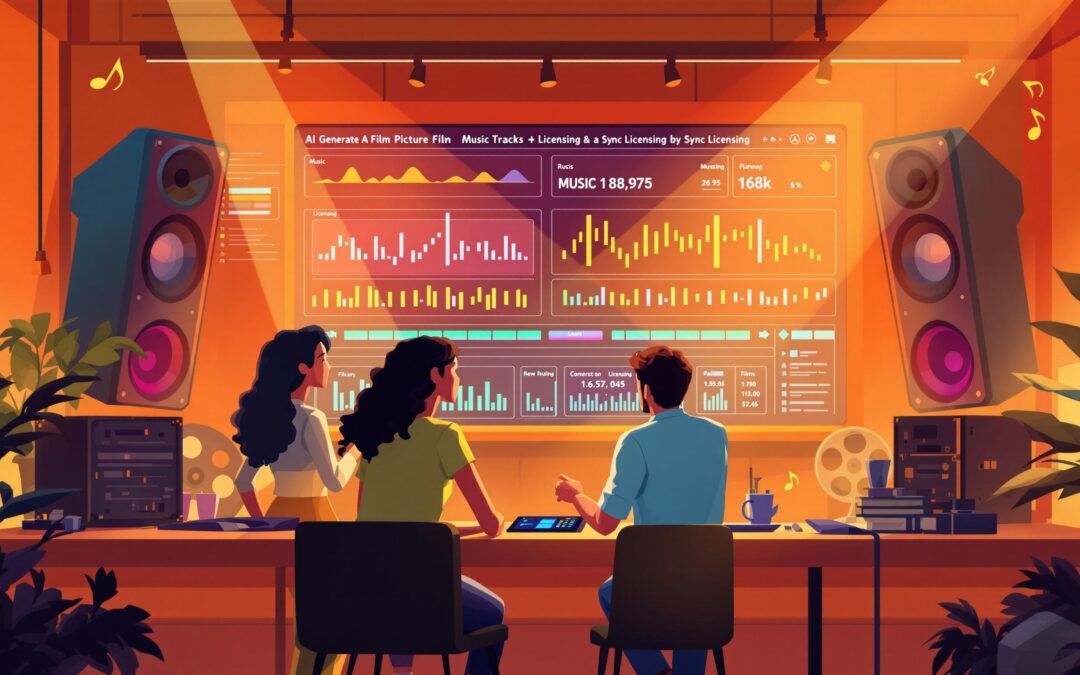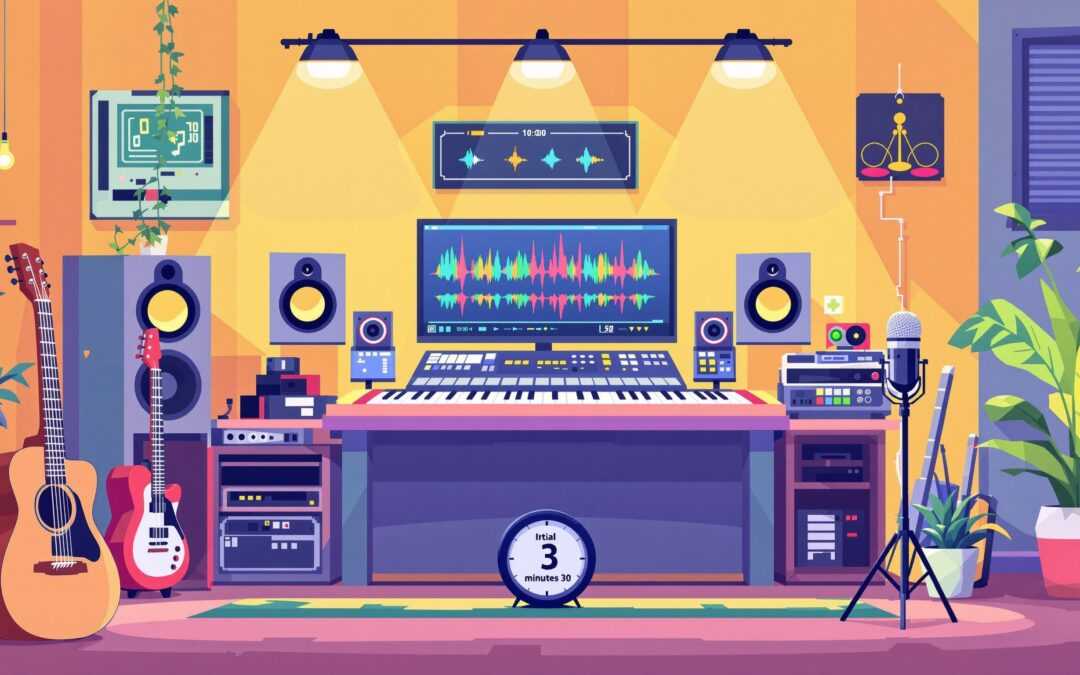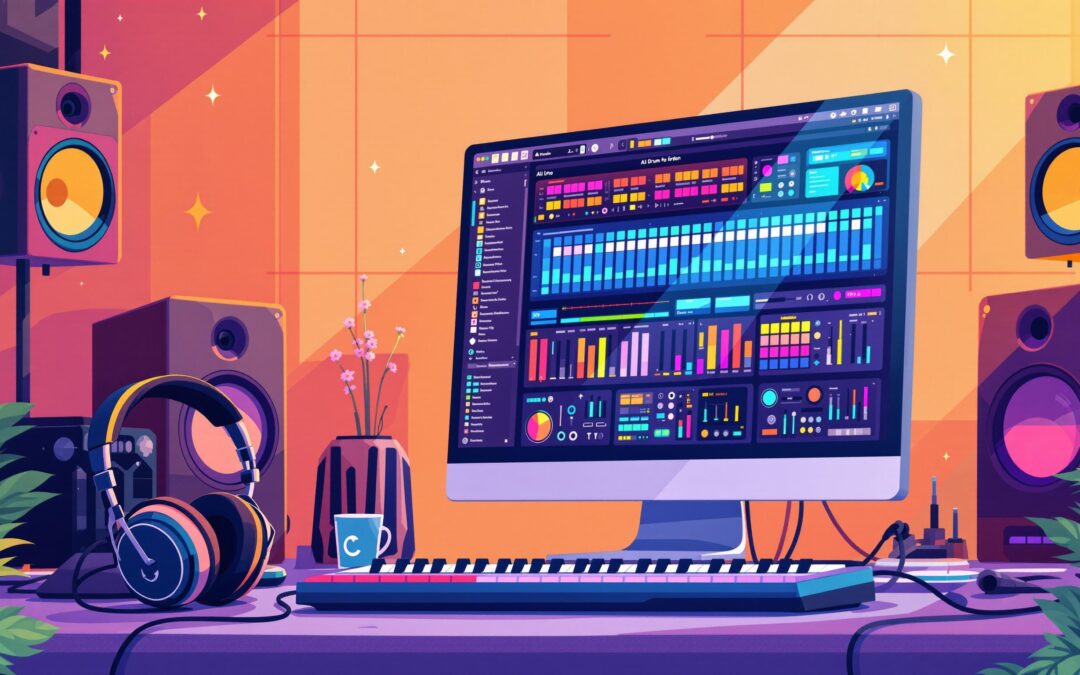CD Baby lets independent artists distribute their music globally for a one-time fee starting at $9.99 per release. You keep 91% of your earnings, while CD Baby takes 9%. With partnerships across 150+ platforms like Spotify and Apple Music, it’s a trusted choice for musicians.
Key Steps to Release Your Song:
- Prepare Your Music: Use WAV or FLAC files, and ensure your cover art is 3000×3000 pixels.
- Set Up Your Account: Create an artist profile and choose between the Standard ($9.99) or Pro ($49.99) plan.
- Upload Your Music: Add your tracks, metadata, and cover art. CD Baby provides free UPC barcodes and ISRC codes if needed.
- Distribute and Promote: Use tools like pre-save campaigns, YouTube monetization, and smart links to market your music.
CD Baby vs. Other Platforms:
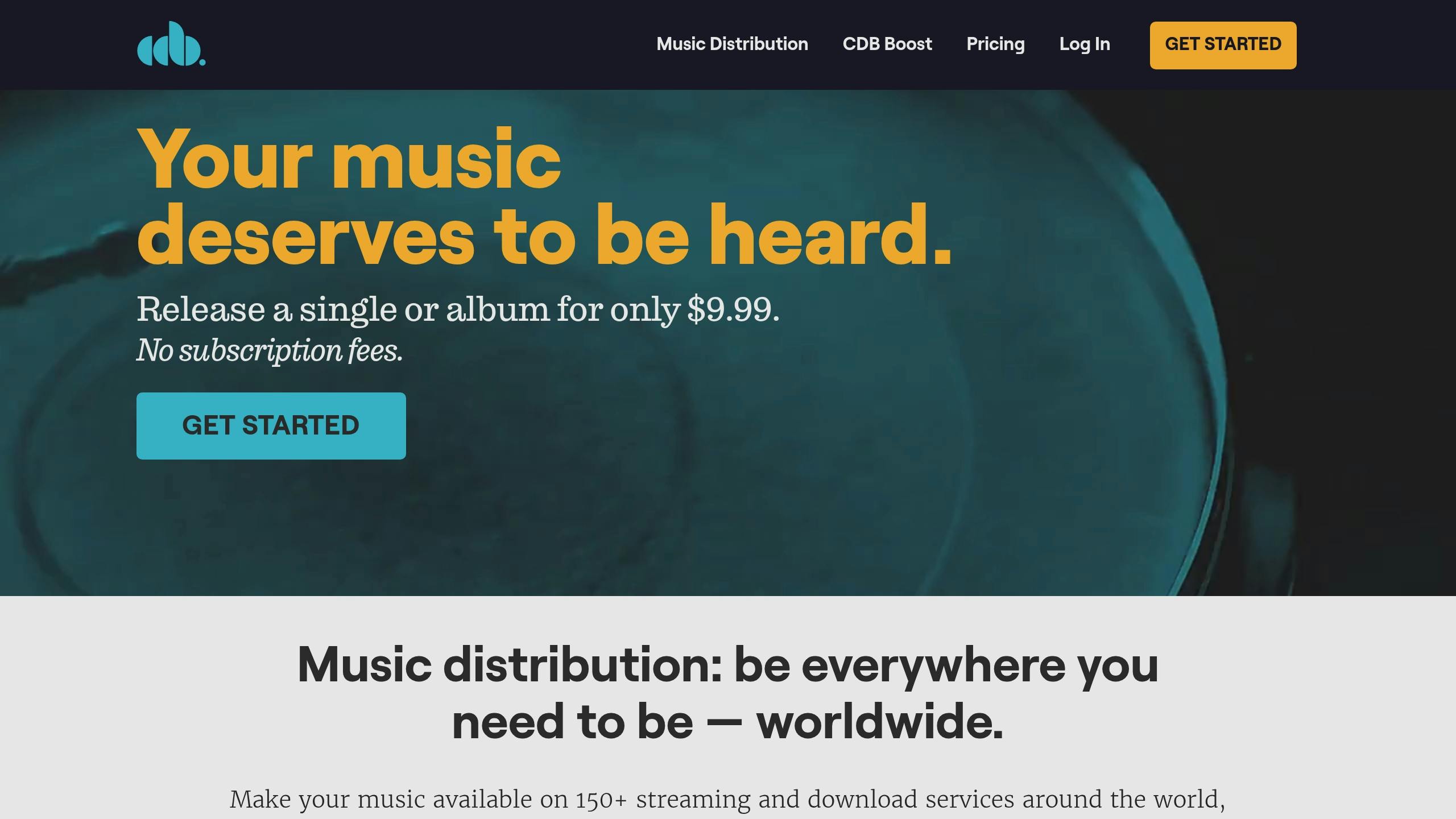
| Feature | CD Baby | DistroKid | TuneCore | Amuse |
|---|---|---|---|---|
| Pricing | $9.99–$49.99/release | $22.99–$89.99/year | $14.99–$49.99/year | $19.99–$59.99/year |
| Royalty Split | 91% (you keep) | 100% (you keep) | 100% (you keep) | 100% (you keep) |
| Release Limit | Unlimited | Unlimited | Limited | Limited |
| Notable Features | Sync licensing, publishing admin | Payment splitting | Store automator | Royalty advances |
CD Baby is ideal for artists releasing fewer tracks or needing publishing administration. For frequent releases, subscription services like DistroKid may be more cost-effective.
Quick Tips:
- Plan Ahead: Set your release date at least 30 days out to allow time for distribution and marketing.
- Leverage Marketing Tools: Use pre-save campaigns, metadata optimization, and email marketing to boost your reach.
- Explore Additional Revenue: Monetize through YouTube, sync licensing, and royalty collection.
CD Baby simplifies the process, so you can focus on creating music while they handle the distribution. Ready to get started? Follow the steps above to launch your music worldwide.
Navigate the CD Baby maze to a flawless music release
Getting Your Music Ready for Release
Audio Quality and Cover Art Requirements
Make sure your audio files meet CD Baby’s standards. Use WAV or FLAC formats for the best results. While MP3 files are accepted, they’ll be re-encoded during the process. Files must be stereo, with a 44.1 kHz sample rate and 16-bit depth.
When naming your audio files, stick to letters, numbers, hyphens, or underscores. Avoid using special characters or spaces.
For cover art, adhere to these specifications:
| Cover Art Requirements | Details |
|---|---|
| Image Dimensions | 3000×3000 pixels (square) |
| File Format | .jpg or .png |
| Color Space | RGB |
| File Size | Minimum 300 DPI |
Once your audio and artwork are ready, gather all the essential information for your release.
Required Music Information
Prepare these details before uploading:
- Release Information:
- Artist name
- Release title
- Genre and subgenre
- Release date
- Track Details:
- Song titles
- Songwriter and composer credits
- Recording date and location
- Publishing details
Ensure the text on your cover art matches your release metadata exactly. CD Baby does not allow certain elements on cover art, including contact info, advertising, time-specific mentions, UPC barcodes, platform names, physical media images, or overly cluttered text.
CD Baby offers a free UPC barcode to track your music sales on platforms like Amazon Music and iTunes . Keep in mind that each release requires unique cover art. While you can reuse the same image for singles by altering the text, avoid using identical artwork across multiple releases. Tools like Canva can help you design professional cover art that meets these guidelines.
CD Baby Account Setup and Upload Process
Setting Up Your Artist Profile
To get started with CD Baby, click on ‘Sign Up’ and create an account by providing your name, email, and password. After registering, complete your artist profile by adding your band name and contact details. Once your profile is ready, take a moment to review the available pricing plans and pick the one that best suits your release needs.
CD Baby Pricing Plans Compared
CD Baby provides two pricing tiers, each offering distinct features:
| Feature | Standard ($9.99) | Pro ($49.99) |
|---|---|---|
| Digital Distribution | 150+ platforms | 150+ platforms |
| YouTube Content ID | ✓ | ✓ |
| Marketing Tools | ✓ | ✓ |
| Revenue Share | 9% | 9% |
| Royalty Collection | ✗ | ✓ |
| Publishing Administration | ✗ | ✓ |
| One-time Fee | ✓ | ✓ |
The Pro plan is a good choice if you want CD Baby to handle royalty collection and song registration with collection societies . On the other hand, the Standard plan is better suited for those who prefer managing these tasks on their own . Once you’ve chosen your plan, you’re ready to upload your music.
Step-by-Step Music Upload Guide
Before you begin, ensure your audio files and artwork are prepared (refer to the ‘Getting Your Music Ready’ section). Then, follow these steps:
-
Start Your Release
Log in to your account, navigate to ‘Album & Singles,’ click ‘Add New Release,’ and select your pricing tier . -
Upload Your Audio
Go to ‘Tracks & Audio’ and click ‘Add/Edit Audio.’ Make sure your files meet these requirements:- Follow the audio specifications mentioned earlier.
- Name files using only letters, numbers, hyphens, or underscores .
-
Add Metadata
Provide key track details, including:- A release date (set at least 30 days in the future).
- Genre selections.
- Other required information .
CD Baby’s team manually reviews every submission to ensure it complies with distribution guidelines . If you don’t have ISRCs, they’ll assign them for you, though this might take additional time. Once approved, CD Baby will distribute your music to major platforms like Apple Music, Spotify, Amazon, and over 150 others . You’ll also gain access to tools for claiming your artist profiles on top streaming platforms.
sbb-itb-1c6af30
Marketing Your Music After Release
CD Baby Marketing Tools Guide
CD Baby offers a range of tools to help you reach more listeners and connect with your audience. With your CD Baby account, you get access to the Show.co platform, which includes several promotional tools:
| Tool | Purpose | Key Features |
|---|---|---|
| HearNow | Smart landing page | Provides a single link to all streaming platforms |
| Laylo | Fan notification system | Sends updates via text, email, and direct messages |
| Groover | Industry connection platform | Links you to blogs, radio stations, and curators |
| Pre-save campaigns | Boost pre-release excitement | Encourages early streams and builds anticipation |
HearNow makes it easy for fans to find your music by centralizing all your streaming links in one place. Once you’ve set up these tools, make sure your song details are fine-tuned for better discoverability.
Music Metadata Best Practices
Having accurate metadata is a crucial part of your marketing plan. Pay attention to these key elements:
- Song title and artist name (ensure consistency across platforms)
- Release date and genre tags
- Credits for composers and producers
- ISRC codes
- Publisher details
Keep your metadata updated, clear, and complete . When choosing genres, aim for precision to reflect your sound while also appealing to your intended audience .
Social Media and Email Promotion
Consistency is key when promoting your music on social media. Make sure your branding is cohesive across platforms and post regularly. Here are some ways to boost your reach:
- Use tags wisely to expand visibility
- Interact with fans through comments, shares, and engaging posts
Email marketing is also a powerful tool, with an average return of $38 for every $1 spent . Use it to build real connections by sharing exclusive content like behind-the-scenes clips, early access to new music, special merch offers, or fan discounts.
These strategies, combined with CD Baby’s marketing tools, can help you amplify your music release and grow your audience.
"The whole point of social media is to connect with others. And when it comes to your fans, making ‘real’ connections are what matter." – Ditto Music
Other Music Distribution Options
CD Baby vs Other Distributors
When looking at music distribution services, each platform has its strengths. For example, DistroKid is widely recognized as one of the top choices globally . Here’s a quick breakdown of some leading platforms:
| Feature | CD Baby | DistroKid | TuneCore | Amuse |
|---|---|---|---|---|
| Pricing Model | $9.99–$49.99 per release | $22.99–$89.99/year | $14.99–$49.99/year | $19.99–$59.99/year |
| Royalty Split | Takes 9% | Keeps 100% | Keeps 100% | Keeps 100% |
| Release Limit | Unlimited | Unlimited | Limited | Limited |
| Notable Features | Sync licensing, publishing admin | Fast distribution, payment splitting | Store automator, daily trends | Royalty advances |
CD Baby charges a one-time fee for releases, while subscription-based services like DistroKid may be a better fit for artists releasing music frequently . For those on a tighter budget, combining free platforms with paid services can help maximize reach.
Using YouTube and SoundCloud
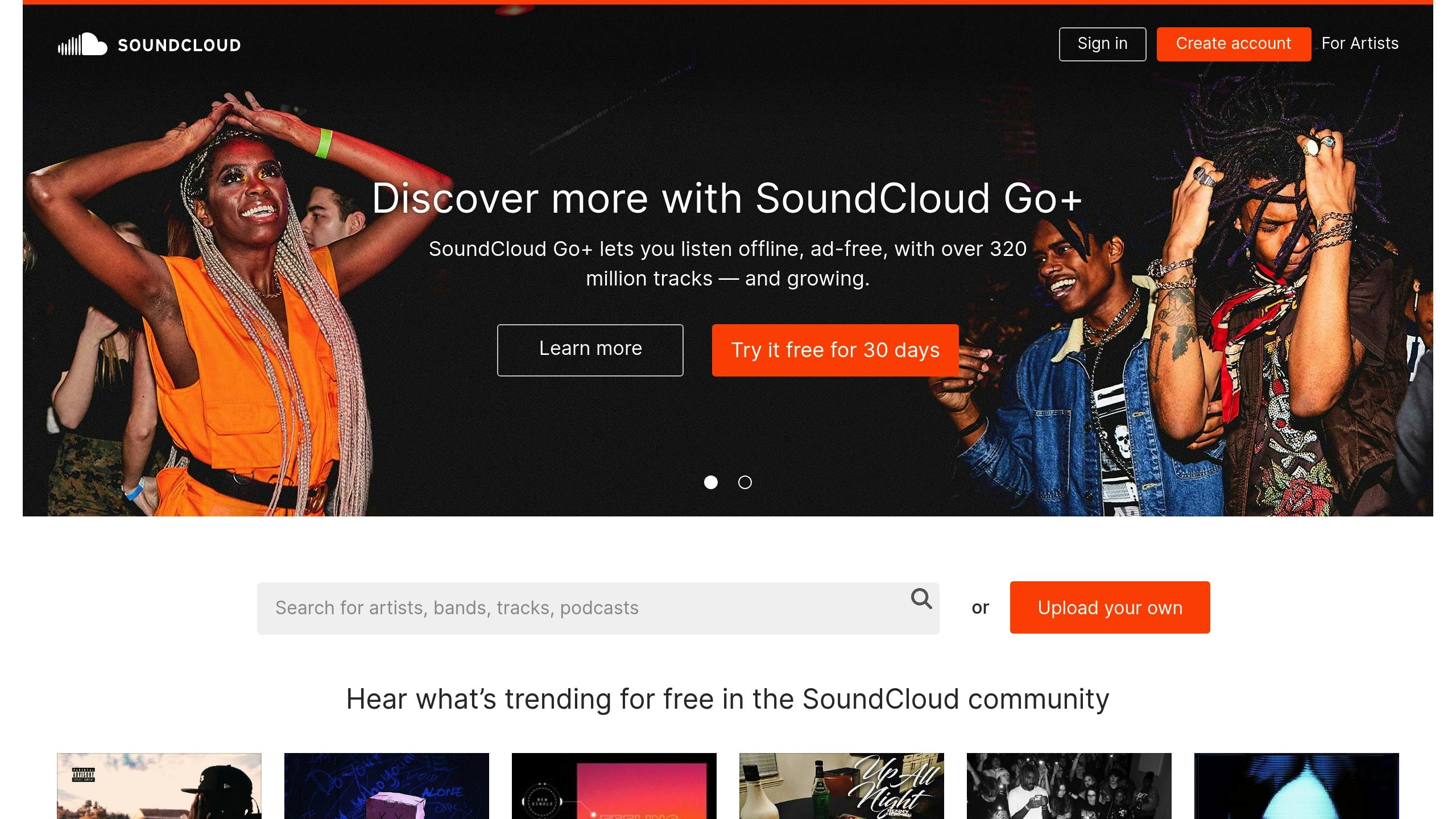
YouTube is a powerful tool for reaching new listeners, thanks to its massive audience and SEO advantages . However, keep in mind that YouTube typically pays less per stream compared to platforms like Spotify .
On the other hand, SoundCloud is ideal for building connections and engaging directly with your fans . It’s a great platform for networking with other artists and listeners.
To make the most of these platforms, it’s important to think beyond distribution and focus on managing your publishing rights effectively.
Music Publishing Basics
Knowing the basics of music publishing can help you unlock additional revenue streams. Services like TuneCore’s publishing administration can assist in collecting royalties from multiple sources, while CD Baby Pro ($49.99 per release) provides publishing support as part of its package .
Here are some key areas to focus on:
- Mechanical royalties from streaming and sales
- Performance royalties for public plays
- Sync licensing for film, TV, and ads
- International royalty collection for global plays
For artists with fewer than 150,000 annual streams, CD Baby’s one-time fee model might be more cost-effective than subscription-based services . However, if you’re expecting higher streaming numbers, platforms like DistroKid or TuneCore, which let you keep 100% of your royalties, could be a smarter choice .
Conclusion: Next Steps
Release Checklist
To ensure your music release through CD Baby goes smoothly, follow this checklist:
| Timeline | Action Items | Key Details |
|---|---|---|
| 4-6 Weeks Before | Audio Preparation | Master your track at 16-bit/44.1kHz or higher, and use cover art (3000x3000px). |
| 3-4 Weeks Before | Platform Setup | Complete your CD Baby profile and claim your Spotify and Apple Music profiles. |
| 2-3 Weeks Before | Marketing Setup | Plan a content calendar and prepare promotional materials. |
| 1-2 Weeks Before | Pre-Release | Enable pre-saves and submit your track for Spotify playlist consideration. |
| Release Week | Launch Activities | Activate all promotional channels and monitor distribution. |
Once these steps are done, shift your efforts toward building momentum and engaging your audience.
Tips for Release Success
After completing the checklist, take these steps to make the most of your release:
- Build excitement before your release. For example, indie artist Alice Howe boosted her Spotify streams by 4,000% with strategic content planning and audience interaction .
- Explore additional revenue options like YouTube monetization, social video monetization, sync licensing, and collecting global royalties .
- Connect with your audience authentically. Run pre-release polls for artwork or song titles, share behind-the-scenes content, grow your email list for direct communication, and use analytics tools to track performance.
These strategies will help you move from preparation to a successful and impactful release.
